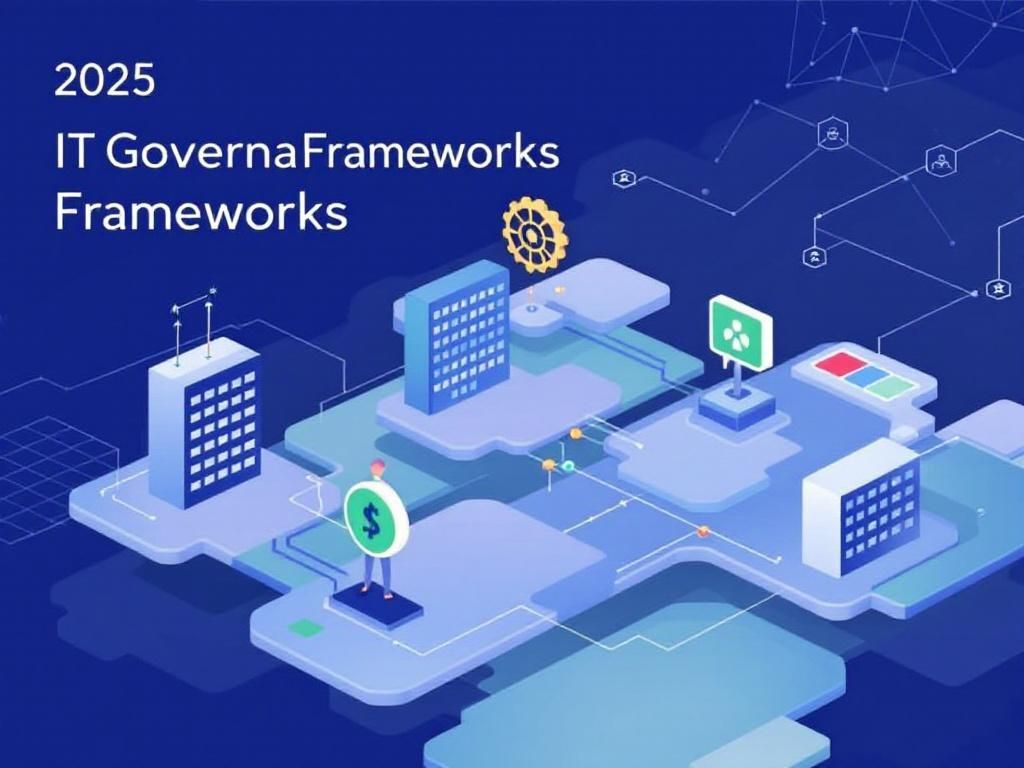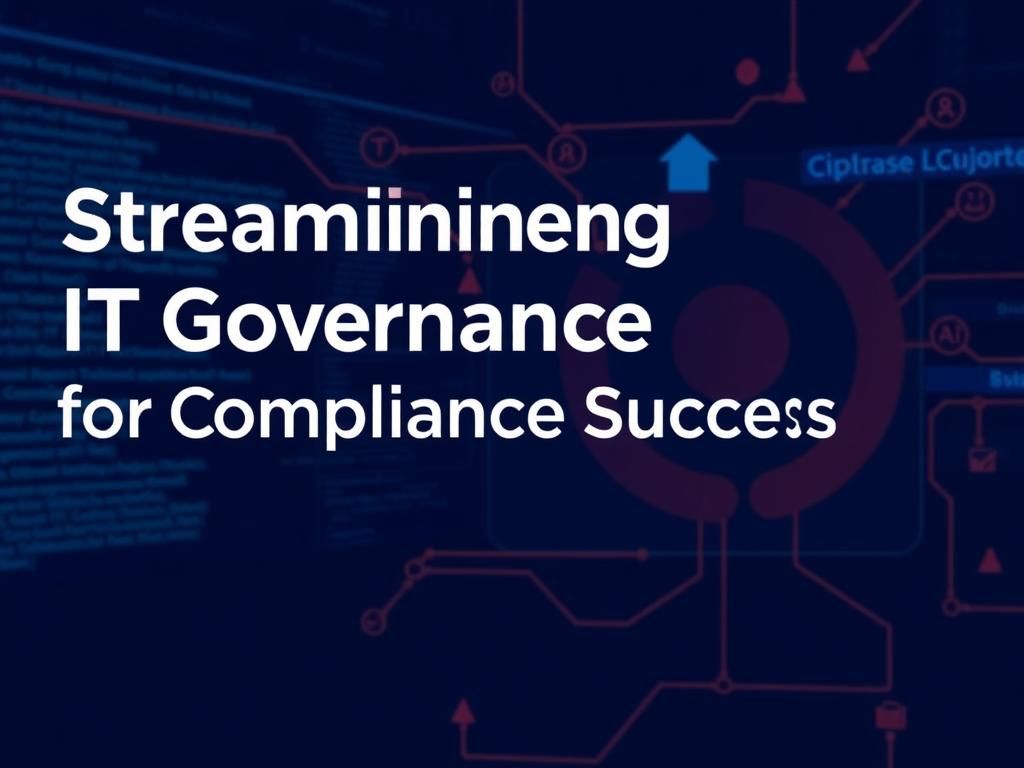Essential IT Governance Frameworks for 2025
Discover the top IT governance frameworks you need for 2025 to enhance compliance, security, and efficiency in your organization.

As technology continues to evolve at a rapid pace, organizations must adapt their governance frameworks to manage risks, ensure compliance, and drive performance. In the coming years, IT governance will become increasingly crucial as businesses rely more on digital assets and data-driven decision-making. This article will explore the IT governance frameworks that will be essential for organizations in 2025, focusing on their key components, benefits, and implementation strategies.
Table of Contents
The Importance of IT Governance
IT governance is a critical aspect of organizational management, ensuring that IT investments align with business strategies and objectives. The primary goals include:
- Maximizing return on IT investments
- Mitigating risks associated with technology
- Ensuring compliance with regulations and standards
- Enhancing performance and operational efficiency
By establishing a solid IT governance framework, organizations can foster accountability, transparency, and effective decision-making, ultimately driving business success in a competitive landscape.
Key IT Governance Frameworks for 2025
As organizations prepare for the future, several prominent IT governance frameworks will emerge as essential tools for effective governance. Below are the frameworks that are likely to gain traction:
1. COBIT 2019
Control Objectives for Information and Related Technologies (COBIT) is a comprehensive framework that provides guidelines for developing, implementing, and maintaining effective governance and management of enterprise IT. The 2019 version emphasizes:
- Alignment of IT with business objectives
- Integration of governance and management
- Focus on stakeholder needs
- Continual improvement and adaptation
COBIT 2019 introduces a flexible design that allows organizations to tailor governance practices to their specific needs, making it highly adaptable to various industries.
2. ITIL 4
The Information Technology Infrastructure Library (ITIL) is a widely adopted framework focused on IT service management (ITSM). The latest version, ITIL 4, incorporates modern practices such as Agile, DevOps, and Lean, allowing organizations to:
- Deliver value to customers through better service management
- Improve collaboration and communication across teams
- Enhance service delivery and customer satisfaction
By integrating ITIL 4 into their governance strategies, organizations can ensure that their IT services align with business goals while remaining agile and responsive to changing demands.
3. ISO/IEC 38500
The ISO/IEC 38500 standard provides a framework for the governance of IT within organizations. It offers principles for effective governance and promotes:
- Transparency in decision-making
- Accountability for IT performance
- Stakeholder engagement
This framework emphasizes the need for governance structures to be aligned with organizational strategies, making it suitable for both public and private sector organizations.
4. NIST Cybersecurity Framework
The National Institute of Standards and Technology (NIST) Cybersecurity Framework is designed to help organizations manage and reduce cybersecurity risk. Key components include:
| Function | Description |
|---|---|
| Identify | Develop an understanding of cybersecurity risk to systems, assets, data, and capabilities. |
| Protect | Implement safeguards to ensure the delivery of critical infrastructure services. |
| Detect | Develop and implement appropriate activities to identify the occurrence of a cybersecurity event. |
| Respond | Develop and implement appropriate activities to take action regarding a detected cybersecurity event. |
| Recover | Develop and implement appropriate activities to maintain plans for resilience and restore any capabilities or services that were impaired due to a cybersecurity event. |
Organizations adopting this framework can create a robust cybersecurity posture that aligns with their governance and risk management strategies.
Implementing IT Governance Frameworks
Implementing an IT governance framework requires careful planning and execution. Here are key steps organizations should consider:
1. Define Objectives
Establish clear objectives that align IT governance with overall business goals. This will help in prioritizing initiatives and resource allocation.
2. Engage Stakeholders
Involve key stakeholders from various departments to ensure diverse perspectives are considered. This could include IT, finance, legal, and business unit leaders.
3. Assess Current State
Evaluate the existing governance practices and identify areas for improvement. This assessment can help determine the most suitable framework for the organization.
4. Tailor the Framework
Adapt the chosen framework to fit the organization’s unique needs and culture. This could involve customizing processes, tools, and communication strategies.
5. Train and Communicate
Provide training for employees to ensure they understand their roles within the governance framework. Effective communication is crucial for fostering a culture of accountability and compliance.
6. Monitor and Review
Establish metrics to evaluate the effectiveness of the governance framework. Regularly review and adjust practices based on performance data and feedback.
Challenges in IT Governance
While implementing an IT governance framework offers numerous benefits, organizations may encounter several challenges:
- Resistance to Change: Employees may be resistant to new processes or practices, making it vital to communicate the benefits clearly.
- Lack of Resources: Limited budgets or personnel can hinder the successful implementation of governance frameworks.
- Complexity of Regulations: Navigating various compliance requirements can be daunting, necessitating a thorough understanding of relevant laws and standards.
Conclusion
As organizations prepare for the future, embracing effective IT governance frameworks will be essential. By adopting frameworks such as COBIT 2019, ITIL 4, ISO/IEC 38500, and the NIST Cybersecurity Framework, businesses can mitigate risks, ensure compliance, and drive overall performance. The key to success lies in understanding the unique needs of the organization, engaging stakeholders, and fostering a culture of accountability across all levels. With the right foundation in place, organizations will be well-equipped to navigate the complexities of the digital landscape in 2025 and beyond.
FAQ
What are the key components of IT governance frameworks in 2025?
In 2025, key components of IT governance frameworks include risk management, compliance, strategic alignment, performance measurement, and value delivery.
How do IT governance frameworks improve business performance?
IT governance frameworks enhance business performance by ensuring that IT investments align with business objectives, optimize resources, and manage risks effectively.
What are the most popular IT governance frameworks to consider in 2025?
Popular IT governance frameworks in 2025 include COBIT, ITIL, ISO/IEC 38500, and the NIST Cybersecurity Framework.
How can organizations ensure compliance with IT governance frameworks?
Organizations can ensure compliance with IT governance frameworks by conducting regular audits, training staff, and establishing clear policies and procedures.
What role does cybersecurity play in IT governance frameworks?
Cybersecurity is a critical component of IT governance frameworks, as it helps organizations protect sensitive data, mitigate risks, and maintain stakeholder trust.
How do emerging technologies impact IT governance frameworks in 2025?
Emerging technologies impact IT governance frameworks by introducing new challenges and opportunities, requiring organizations to adapt their governance strategies to manage innovation and security.








